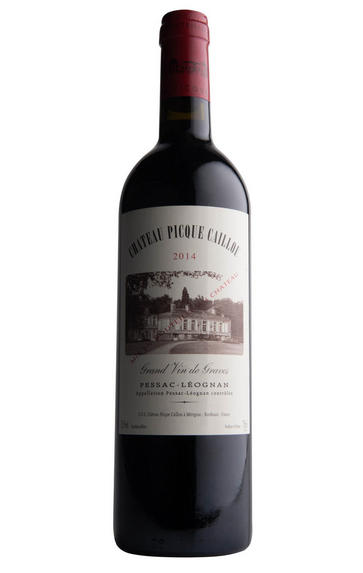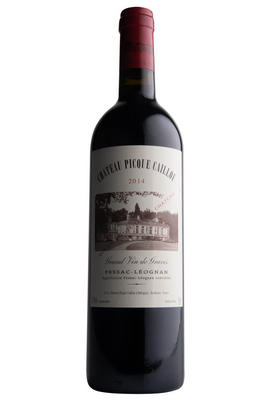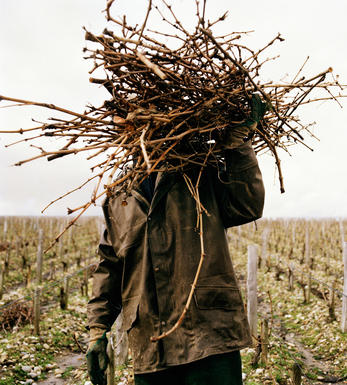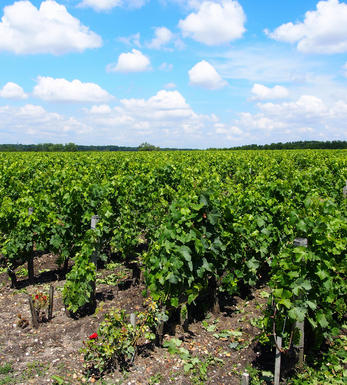
2014 Château Picque Caillou, Pessac-Léognan, Bordeaux

Critics reviews
Neal Martin - 31/03/2017
About this WINE

Chateau Picque Caillou
Picque Caillou is a Pessac-Leognan-based Bordeaux wine estate with a long history but with no reputation for quality until very recently.
Then in 1947 it was purchased by Etienne Denis, an entrepreneur who lived in Indo-China but who entrusted the estate to competent managers. His granddaughter Isabelle took over in 1997 but the real step-change occurred in 2006 when her husband, Paulin Calvet, came into the picture. Paulin comes from a famous Bordeaux wine family and has brought his vast experience to bear in improving every aspect of the viticulture and vinification.
The white grapes are very gently pressed before the juice is passed into oak barrels, 20% new, for fermentation. The lees are stirred on a weekly basis for 6-7 months until the wine is bottled in May. This is definitely an estate to watch.

Pessac-Leognan
In 1986 a new communal district was created within Graves, in Bordeaux, based on the districts of Pessac and Léognan, the first of which lies within the suburbs of the city. Essentially this came about through pressure from Pessac-Léognan vignerons, who wished to disassociate themselves from growers with predominately sandy soils further south in Graves.
Pessac-Léognan has the best soils of the region, very similar to those of the Médoc, although the depth of gravel is more variable, and contains all the classed growths of the region. Some of its great names, including Ch. Haut-Brion, even sit serenely and resolutely in Bordeaux's southern urban sprawl.
The climate is milder than to the north of the city and the harvest can occur up to two weeks earlier. This gives the best wines a heady, rich and almost savoury character, laced with notes of tobacco, spice and leather. Further south, the soil is sandier with more clay, and the wines are lighter, fruity and suitable for earlier drinking.
Recommended Châteaux: Ch. Haut-Brion, Ch. la Mission Haut-Brion, Ch. Pape Clément, Ch Haut-Bailly, Domaine de Chevalier, Ch. Larrivet-Haut-Brion, Ch. Carmes Haut-Brion, Ch. La Garde, Villa Bel-Air.

Cabernet Sauvignon Blend
Cabernet Sauvignon lends itself particularly well in blends with Merlot. This is actually the archetypal Bordeaux blend, though in different proportions in the sub-regions and sometimes topped up with Cabernet Franc, Malbec, and Petit Verdot.
In the Médoc and Graves the percentage of Cabernet Sauvignon in the blend can range from 95% (Mouton-Rothschild) to as low as 40%. It is particularly suited to the dry, warm, free- draining, gravel-rich soils and is responsible for the redolent cassis characteristics as well as the depth of colour, tannic structure and pronounced acidity of Médoc wines. However 100% Cabernet Sauvignon wines can be slightly hollow-tasting in the middle palate and Merlot with its generous, fleshy fruit flavours acts as a perfect foil by filling in this cavity.
In St-Emilion and Pomerol, the blends are Merlot dominated as Cabernet Sauvignon can struggle to ripen there - when it is included, it adds structure and body to the wine. Sassicaia is the most famous Bordeaux blend in Italy and has spawned many imitations, whereby the blend is now firmly established in the New World and particularly in California and Australia.


Buying options
Add to wishlist
Description
This 24 hectare property boasts classic gravel soils and a notably warm microclimate, so performs well in cooler years like 2014. The ethos in the vineyard is lutte raisonée, and vinification and ageing (12 months in French oak, 30% of it new) are similarly sympathetic. The resulting wine is precisely what one wants from Pesac-Léognan: elegant and mineral, with aromas including black cherries and graphite.
Unimaginative perhaps, but Pique Caillou ’14 is a sensational match for roast beef.
Will Heslop, Buyer. Berry Bros. & Rudd.
wine at a glance
Delivery and quality guarantee